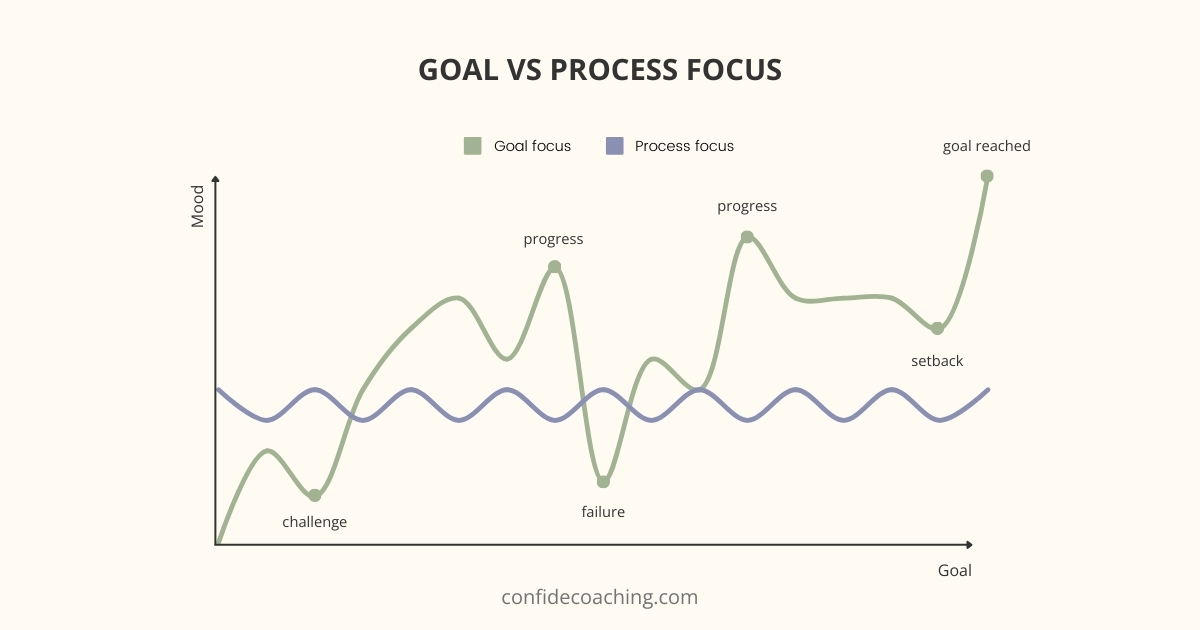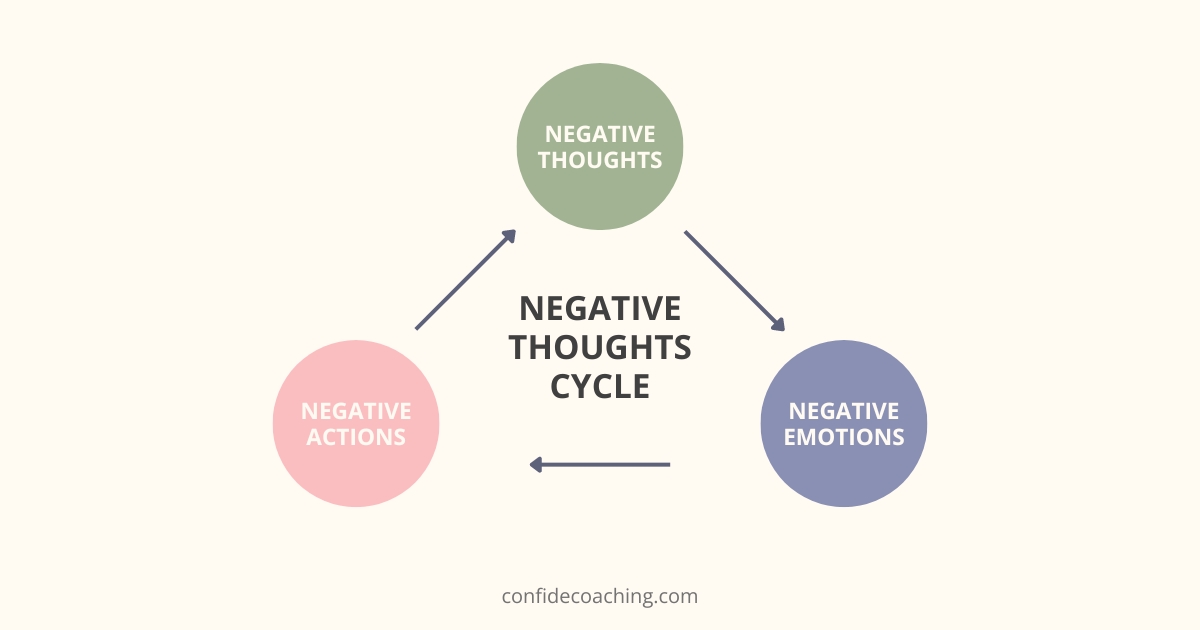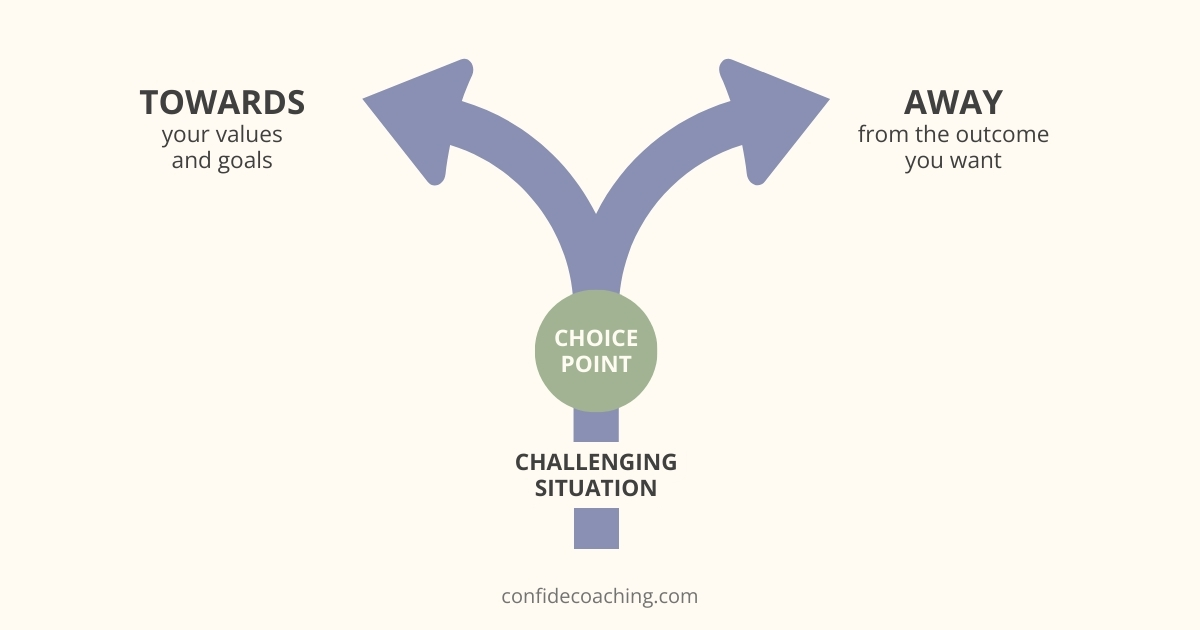
We’ve all experienced moments of feeling stuck. Maybe you’re in a job that feels like a dead end or in a relationship that brings more stress than happiness. Perhaps you’re struggling to complete a challenging project, trying to develop a new skill, or aspiring to turn your passion into a business. Despite your best efforts, you remain stuck in place.
The frustration of feeling stuck often comes with a dose of confusion. We want to move forward, but the path ahead seems unclear. How do we decide whether to keep pushing through difficulties or change our course? And when we’re deep in stagnation, what practical steps can we take to overcome the mental, emotional, and other obstacles holding us back?
Compounding this issue is the tendency to take actions that inadvertently move us away from our goals. These actions, often driven by negative thought patterns, avoidance behaviors, and cognitive biases, create a vicious cycle of frustration and further stagnation.
The key to breaking free lies in adopting new perspectives. Training your brain to think differently can reveal solutions that were previously obscured. This shift in perspective not only helps tackle immediate challenges but also promotes long-term growth and creativity. By learning to view the world through various lenses, you can improve problem-solving, enhance decision-making, and boost innovation.
This article explores the power of new perspectives and offers practical strategies to retrain your brain. You’ll learn about understanding mental blocks, recognizing unhelpful patterns, and utilizing Choice Points to make values-consistent decisions. Additionally, we’ll discuss the importance of defining problems clearly, reframing goals from outcomes to behaviors, and challenging ourselves through new experiences. Whether facing a personal challenge or seeking professional growth, these insights will equip you with the knowledge and skills to move forward with confidence and clarity.
Understanding Mental Blocks
Definition and Explanation
Definition of Mental Blocks: Mental blocks are psychological barriers that impede the ability to think clearly, make decisions, or take action. These blocks can arise from various sources, including stress, anxiety, fear, or negative past experiences.
Common Signs and Symptoms:
- Difficulty concentrating or focusing on tasks.
- Feeling overwhelmed or paralyzed when faced with decisions.
- Procrastination or avoidance of certain tasks or situations.
- Recurring negative thoughts or self-doubt.
- Reduced creativity and problem-solving ability.
- Emotional distress, such as frustration, irritability, or sadness.

Underlying Mechanisms
Explanation of How Mental Blocks Form
- Psychological Stress and Anxiety: Mental blocks often form in response to psychological stress and anxiety. When we are faced with demanding situations or high-pressure environments, our brain’s stress response system activates. This triggers the release of stress hormones like cortisol, which can interfere with cognitive processes, leading to impaired thinking, reduced focus, and difficulty making decisions.
- Fear of Failure and Perfectionism: Fear of failure and perfectionism are significant contributors to mental blocks. When we set excessively high standards for ourselves or fear making mistakes, we can become paralyzed by the possibility of not meeting expectations. This fear creates a mental barrier that prevents us from taking action or exploring new ideas.
- Negative Past Experiences: Past experiences, especially negative ones, can create mental blocks. If we have previously encountered failure, criticism, or rejection, these memories can become ingrained in our subconscious. As a result, when faced with similar situations, our brain recalls these past experiences, triggering self-doubt and hesitation.
- Cognitive Biases: Cognitive biases are systematic patterns of deviation from norm or rationality in judgment. They can cloud our thinking and create mental blocks by distorting our perception of reality. Common cognitive biases that contribute to mental blocks include:
- Confirmation Bias: The tendency to seek out information that confirms our preexisting beliefs and ignore information that contradicts them.
- Negativity Bias: The tendency to focus more on negative experiences and overlook positive ones.
- Overgeneralization: The tendency to make broad conclusions based on limited evidence.
- Overwhelm and Information Overload: In today’s fast-paced world, we are often bombarded with a constant stream of information and tasks. This can lead to overwhelm and information overload, where our brain becomes unable to process the sheer volume of data. As a result, we may struggle to prioritize tasks, make decisions, and take effective action.
- Lack of Clarity and Direction: Mental blocks can also form when we lack clarity and direction. Without a clear understanding of our goals, priorities, and next steps, we can feel lost and uncertain about how to proceed. This ambiguity creates a mental block that hinders our progress.
Understanding these underlying mechanisms can help us identify the root causes of our mental blocks and develop strategies to overcome them. Often, there is more than one issue at play. Like undoing a knot, we should patiently and systematically address each contributing factor. By carefully untangling these intertwined issues, we can make progress and gain clarity on how effective our current thinking patterns are, allowing us to take steps to improve them.
Developing New Perspectives
Developing new perspectives is a complex process. It involves paying close attention, recognizing the cognitive and behavioral patterns at play, and actively challenging ourselves. Stepping out of the comfort zone of our habitual mindset is crucial. By shifting our perspective on a situation, we can uncover valuable insights. This can lead to identifying new solutions we were previously unaware of, helping us move forward and overcome obstacles.
Developing new perspectives involves several key steps:
Clarify the Problem for New Insights
The first step in developing new perspectives and overcoming mental blocks is to clearly define the problem you are trying to solve and identify the goal you want to achieve. Gaining clarity on these aspects is crucial because it lays the foundation for effective problem-solving and focused action.
Importance of Clarity
It is surprising how often we find ourselves feeling stuck without a clear understanding of what the actual problem is. This lack of clarity can lead to confusion, wasted effort, and increased frustration. Without a well-defined problem, our efforts to solve it can be unfocused and ineffective. Clarifying the problem helps to narrow our focus and channel our energy towards finding a solution.
Steps to Define the Problem
1. Identify the Symptoms: Start by listing the specific symptoms or indicators that suggest there is a problem. These might include feelings of frustration, repeated obstacles, or feedback from others. For instance, if you are struggling with a work project, symptoms might include missed deadlines, frequent misunderstandings, or low team morale.
2. Ask Specific Questions: Asking specific questions about the situation can help uncover the root cause of the problem.
- Questions like “What exactly is going wrong?”, “When do these issues occur?”, “Who is involved?”, and “How does this problem impact my goals?” can provide deeper insights.
- For example, if you are facing difficulties in your fitness routine, ask yourself when you feel least motivated, what triggers this lack of motivation, and how it affects your overall health goals.
3. Distinguish Between Symptoms and Causes: It’s important to differentiate between the symptoms of a problem and its underlying causes.
- Symptoms are the surface-level issues, while causes are the deeper, often hidden, factors that give rise to these symptoms. Identifying the root cause is essential for developing effective solutions.
- For instance, if you frequently procrastinate on important tasks, the symptom is procrastination, but the underlying cause might be fear of failure or lack of interest in the task.
Reframe Your Goals for Better Outcomes
Outcome Goals vs Behavioral Goals
Russ Harris, in his book “ACT Made Simple,” introduces the distinction between outcome goals and behavioral goals. Understanding the difference between these two types of goals is crucial because it helps us focus on what we can control and reduces the anxiety associated with uncertainty.
Outcome goals are the things we want to achieve or acquire. For example, we may aim for a promotion, buy a house, lose twelve pounds, or wish for a partner to change their behavior. While these are mostly great goals to strive for, the challenging reality of outcome goals is that there is no guarantee we will achieve the desired results. This uncertainty often paralyzes us with fear and can lead to frustration and stagnation when things don’t go as planned.
In contrast, we have significant control over our behaviors—especially over what we say and do. Shifting our focus from outcome goals to behavioral goals empowers us to overcome stagnation and move toward our desired direction. Behavioral goals are actionable steps we can take to move closer to our desired outcomes. They are within our control and can be adjusted as needed, providing a sense of accomplishment and progress even if the ultimate outcome is not immediately realized.

Reframing Outcome Goals as Behavioral Goals
To help reframe our approach from outcome goals to behavioral goals, Russ Harris suggests using the Magic Wand Question. Imagine you had a magic wand and all the issues you are struggling with were no longer a problem. How would your life be different? What would you do differently? What actions would you take?
Consider what new activities you would start or what existing ones you might do more of. How would your behavior towards others change? Reflect on how you would act differently at work, at home, or during weekends. By visualizing these changes, you can identify specific behaviors that will help you move toward your desired outcomes. This exercise transforms abstract outcome goals into concrete behavioral goals, which are more actionable and within your control.
Recognize Unhelpful Patterns
Once we gain clarity on the problem we are trying to solve and the behavioral goals we aim to achieve, the next step is to recognize the recurring patterns that contribute to our sense of being stuck. These patterns often manifest as negative thought cycles, avoidance behaviors, and reliance on cognitive biases.
Identifying these unhelpful patterns is crucial. Awareness provides us with the power of choice, allowing us to decide how to respond rather than simply reacting. This newfound awareness can lead to significant progress. It can also mark the first tangible results on our journey to change.
Noticing Negative Thought Patterns
Negative thinking can significantly impact our ability to move forward. These thoughts often arise automatically and can become deeply ingrained over time.
Examples include self-doubt, catastrophizing (expecting the worst), and all-or-nothing thinking (seeing situations in black and white terms). To identify these patterns, try to observe your internal dialogue, especially in stressful or challenging situations.
For example, if you find yourself thinking, “I always fail at this,” or “This will never work,” you are engaging in negative thought patterns. Writing these thoughts down in a journal can help you see them more clearly and begin to challenge their validity.

Recognizing Avoidance Behaviors
Avoidance behaviors are actions we take (or don’t take) to evade uncomfortable situations or feelings. These can include procrastination, excessive distraction (such as overuse of social media), and avoiding difficult conversations. Avoidance might provide temporary relief but often leads to increased stress and missed opportunities in the long run.
To identify avoidance behaviors, reflect on tasks or situations you consistently delay or avoid. Ask yourself why you might be avoiding them and what feelings or outcomes you are trying to escape. Journaling about these experiences can help uncover the underlying reasons for your avoidance.
Identifying Cognitive Biases
Cognitive biases are systematic patterns of deviation from rational thinking, which can distort our perception of reality. Common cognitive biases that contribute to feeling stuck include:
- Confirmation Bias: Seeking out information that confirms preexisting beliefs while ignoring contradictory evidence.
- Negativity Bias: Focusing more on negative experiences than positive ones.
- Overgeneralization: Making broad conclusions based on limited evidence.
Recognizing these biases involves being mindful of how you process information and make decisions. For instance, if you often find yourself saying, “Nothing ever goes right for me,” you might be falling into the trap of negativity bias. Challenging these biases requires conscious effort and reflection, which can be facilitated through journaling, mindfulness practices, therapy, or working with a life coach.
Critical Decision Moments: The Choice Point
Cultivating the ability to observe mindfully—meaning you observe without judgment—puts you in a powerful position. By noticing troubling thoughts or emotions and recognizing when you engage in avoidance behaviors, you place yourself at the base of a choice point.
Understanding Choice Points
According to Russ Harris, a renowned therapist and author known for his expertise in Acceptance and Commitment Therapy (ACT), Choice Points are moments when you must decide to move toward your goals or away from them. These moments provide an opportunity to choose actions that align with your core values, enhancing your flexibility and commitment to meaningful behavior.
Recognizing these Choice Points allows you to better control your reactions to your thoughts and feelings. This helps you act more flexibly and stay committed to your values. Additionally, identifying Choice Points can build resilience, making it easier to handle life’s challenges.
It is important to highlight that we should not try to fight off, argue, or support difficult thoughts and emotions that arise when we are about to engage in sabotaging behavior. Instead, we should simply acknowledge these thoughts and emotions and lean into the discomfort. Rather than becoming judgmental toward ourselves or blaming others—which violates the fundamental mindfulness principle of non-judgment—we should focus on the habitual behaviors we default to.
At this very moment, we create a space for a choice to be made: will we engage in behavior that offers short-term relief but takes us away from our goals, or will we acknowledge the discomfort and still choose to take a step, even a small one, in the direction we want to go?
Often, what we do to gain short-term relief from painful thoughts and feelings makes our life worse in the long term. In other words, we get stuck in a vicious cycle of frustration, regrets, negative consequences, more sabotaging actions, and then more regrets. By recognizing and addressing Choice Points, we can break this cycle and move toward a more fulfilling and values-driven life.

Implementing New Perspectives
The Role of Choice Points in Developing New Perspectives
Recognizing and making use of Choice Points plays a key role in developing new perspectives. When we become aware of these moments, we can interrupt our automatic responses and habitual thinking patterns. This awareness allows us to see situations from different angles and consider alternative approaches that we might not have noticed before.
By actively choosing behaviors that align with our values, we break free from the constraints of our usual thought patterns. This process encourages us to question our assumptions, seek out diverse viewpoints, and embrace new experiences. Each Choice Point becomes an opportunity to practice flexible thinking and adopt new perspectives, leading to personal growth and a more adaptive mindset.
In essence, recognizing and leveraging Choice Points helps us develop the ability to view our challenges and decisions through various lenses. This shift not only enhances our problem-solving abilities but also fosters long-term growth and creativity. By integrating this practice into our daily lives, we can continually evolve our perspectives, making it easier to navigate life’s complexities with resilience and clarity.
Conclusion
Recap of Key Points
Developing new perspectives is a multifaceted process that begins with paying attention to our thoughts and feelings, recognizing unhelpful patterns, and making mindful choices. By clearly defining our problems and goals, and understanding the distinction between outcome and behavioral goals, we can create actionable plans that align with our values.
Recognizing Choice Points, as explained by Russ Harris, allows us to interrupt automatic responses and choose actions that promote long-term growth rather than short-term relief. This practice not only helps us overcome mental blocks but also fosters resilience and flexibility.
By actively challenging ourselves through new experiences, diverse viewpoints, and cognitive exercises, we cultivate a mindset open to change and innovation. This holistic approach empowers us to break free from unproductive habits and embrace a more adaptive and fulfilling way of thinking.
Ultimately, the power of new perspectives lies in our ability to see the world through different lenses, enhancing our problem-solving skills, creativity, and overall well-being. By integrating these strategies into our daily lives, we can navigate challenges with confidence and clarity, moving ever closer to our goals.

Paul Strobl, MBA, CPC
Owner of Confide Coaching, LLC
Paul is a Master Life Coach for GenX and GenY executives and business owners. Originally from Houston, Texas, he has been location independent for most of his adult life. He currently resides in the Rhodope Mountains of Bulgaria near the Greek border with his brilliant wife, 14-year-old stepson (officially adopted in 2021!) and a Posavac Hound rescue.
References
1. Harris, R. (2009). ACT Made Simple: An Easy-to-Read Primer on Acceptance and Commitment Therapy. New Harbinger Publications.
2. Harris, R. (2008). The Happiness Trap: How to Stop Struggling and Start Living: A Guide to ACT. Trumpeter Books.
3. Hayes, S. C., Strosahl, K. D., & Wilson, K. G. (2003). Acceptance and Commitment Therapy: An Experiential Approach to Behavior Change. Guilford Press.

